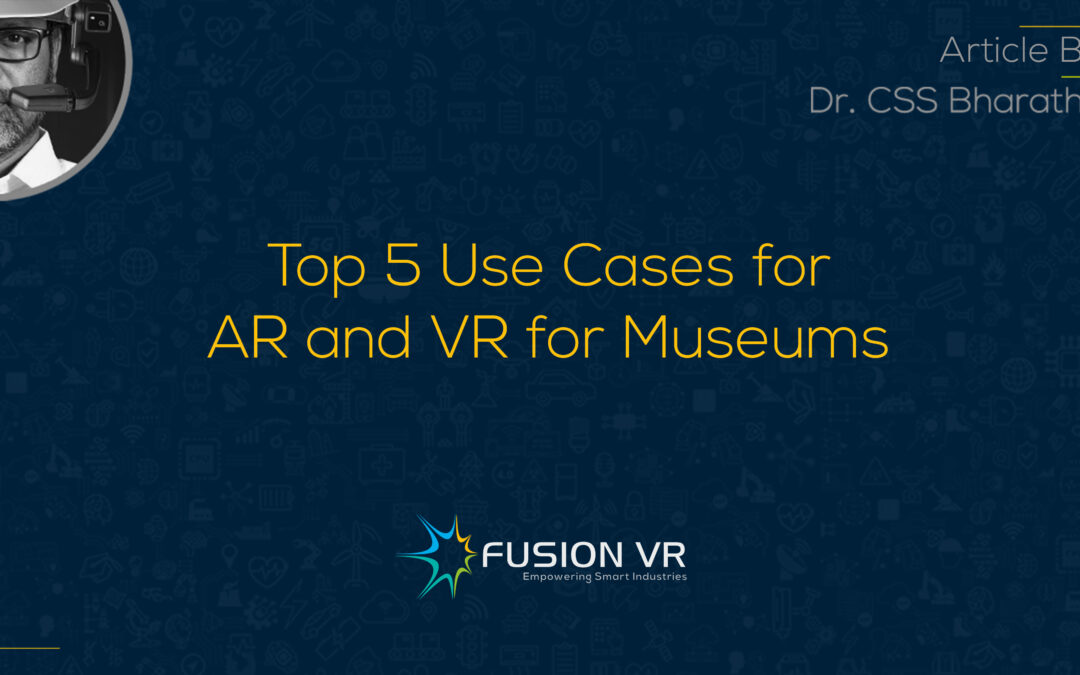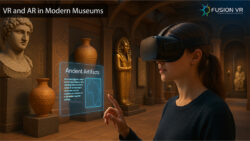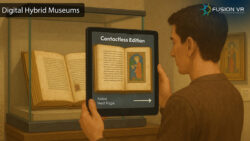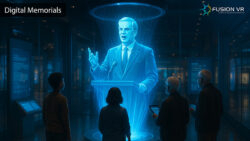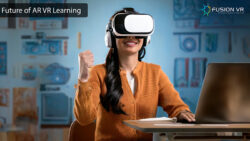Augmented Reality (AR) and Virtual Reality (VR) have found exciting and innovative applications in museums across the country and the world. Both these technologies have proven to be highly interactive and immersive, contributing to enhancing visitor experiences at museums. The traditional museums with static exhibits are not attracting visitors to museums as they did a few decades ago. Museums are sustained by visitor collections and annual membership. They also incur high maintenance costs in addition to supporting research, education and community involvement. Museums need to attract and also monetize visitor arrivals by being innovative. This innovation is being achieved by the use of groundbreaking technologies such as augmented reality and virtual reality. Museums have identified several use cases that use both technologies to deliver a high level of engaging, interactive and immersive VR and AR museum experiences.
Many of the leading museums across the world such as the Louvre and The Smithsonian have led the way as early adopters of augmented reality and virtual reality. The advances in recent years have made these technologies more accessible and affordable which has led to an increasing number of museums to reach out to AR VR solution providers such as Fusion VR.
Let me take you through the most interesting use cases for Augmented Reality and Virtual Reality in museums. Virtual Reality is a digitally created 3D immersive environment that is experienced with a VR headset that completely covers your eyes. The user is cut off from the surrounding reality and is able to accept the reality that they view through the headset. It allows the user to virtually navigate and experience six degrees of freedom inside this virtual reality environment. The environment as I mentioned before is digitally created or a natural environment is rendered in virtual reality. The experience is truly amazing as the human brain is tricked into believing that it’s really a part of the virtual environment.
The first and most important use case for virtual reality is Virtual Museums.
Virtual museums are immersive digital versions of a physical museum. They can be a replica of an existing museum or a completely virtual creation. These online virtual museums exhibit collections of art, artifacts and specimens that are presented digitally as images, video or 3D models. A visitor to the virtual museum enters the portal using a VR headset or using a PC. Navigating this virtual museum using VR is completely immersive and makes the visitor believe they may be in a real museum space. They would be able to get up close and personal with an exhibit in the virtual museum and virtually handle it as they would in real life. This use case of VR in museums is both interesting and significantly beneficial for the global audience. It’s even more important for those who may not possess the financial means to visit the museums in person or are physically challenged and incapable of making a trip.
Here’s the second, an exciting use case for augmented reality in museums, the AR museum guide. Most museums today are the traditional type with exhibits arranged in various halls and rooms. They are manned by security personnel who may intervene should you go and touch or handle a painting or artifact causing some damage. There are barriers and typically lots of people can see it and read in the little description about the name, origin and creator of the object. Most people lose enthusiasm quickly and just amble through the rest of the museum and eventually call it a day. The engagement of a visitor is low and the opportunity to make it memorable is lost. Augmented reality can be used to develop a virtual guide that allows a visitor to navigate through the museum and look up on the exhibit and learn about its features using a smart solution. A QR code placed near the exhibit is scanned and the application unleashes many options to explore the exhibit. This could be information on the exhibit, its features in audio, visual and text formats. All this can be accomplished without making the effort to jostle and get right in front of the exhibit. Cool isn’t it?
The third use case is a virtual time travel to the past. Most of us are generally interested in history and would like to see how things were in the past. We devour period dramas and movies of lost dynasties. The appetite for historical stories never wanes. The recent success of movies such as Ponniyin Selvan is a great example of that. Museums powered by virtual reality can take you through a personal time travel with an experience and help you witness an event as it happens. Would you like to be at the dawn of midnight when Pandit Nehru made his remarkable speech in the Parliament to herald the independence of India? Would like to get on a naval expedition of the Cholas to South East Asia or the D-Day landings of Normandy during World War II. Virtual Reality can create these environments and sequences that immerse you in a journey of the past. The experience will be exhilarating and memorable. That is the magic of virtual reality. It’s not only a great way to get thrilled but is also a profound learning experience for many.
The fourth use case is gamifying the museum experience with a treasure hunt. Kids are always great fans of museums and never miss an opportunity to get on a school museum trip. Such trips can be a wonderful learning experience for them. Suppose a school curriculum wants to teach children about ancient civilizations, it may be helpful to identify specific things in a museum that the children see and learn. This experience can be taken to a new level by making discovery as part of the learning experience. How do we do that? Simple, a treasure hunt. The teacher lists a number of clues that the children need to use to identify certain things in a museum. An AR-powered application helps the kids to navigate through the library to spot these clues. These clues are contained in the artifacts or in the description that we typically find in a museum. Each clue helps to uncover the location of the next clue. Children need to remember the clues and information gained to finally locate the clue which leads them to the treasure. Of course, the treasure is for the children to keep. This gamification helps the kids learn and retain the knowledge for a lifetime with an augmented reality experience.
The fifth and final use case is the use of virtual reality to explore new places and experiment while learning new concepts. This is the virtual reality laboratory for kids in museums. We all know that seeing is believing. Children are introduced to virtual reality exhibits that help them understand concepts. They can follow the steps needed to perform a virtual experiment and repeat it until they become familiar with it. They can also put on their virtual reality headsets and travel to see the Grand Canyon or the Great Wall. All of this is possible with Virtual Reality. Virtual guides also help students learn by engaging with them and helping with their understanding through a VR museum experience.
These are a few of the hundreds of use cases that museums can use to attract, engage, and entertain visitors at AR VR museums. The leadership teams at museums must deploy resources to learn about the use of virtual reality and augmented reality there and encourage them to create new experiences that benefit society. They also need to engage solution providers such as Fusion VR to deliver the right advice on how to incorporate these exciting technologies in museums for enhanced visitor’s experiences.

